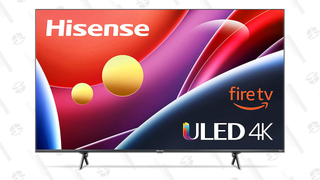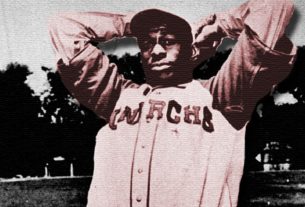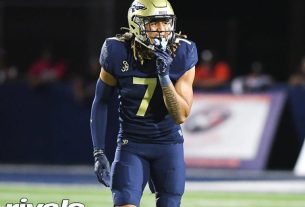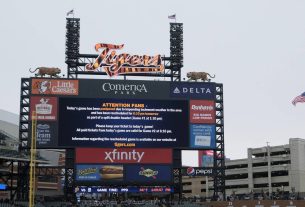
Prior to Buffalo Bills safety Damar Hamlin fighting for his life on Monday Night Football after collapsing in front of a horrified national audience, the ongoing NFL season was already a more regressive step back in the player safety department than any in recent memory. Hamlin being loaded into an ambulance while paramedics attempted to resuscitate his heart was the nadir, but it wasn’t a standalone incident. Along with Tua Tagovailoa‘s recurring brain injuries, Aaron Patrick’s lawsuit against the NFL for an injury caused by their cluttered sidelines, and the growing pushback against deleterious artificial turfs, the NFL’s entertainment component has been diminished this season and the fury among players is growing.
Independent doctors missed Tagovailoa’s concussion symptoms after he stumbled getting manhandled during a completion against the Buffalo Bills in Week 3. The next week, his head was dribbled off the turf against the Bengals on Thursday Night Football. In an odd twist, those were also both of the participants in Monday Night’s Football clash. Tagovailoa also endured another setback in Week 16 against the Packers when he finished the game with a confirmed concussion that wasn’t caught until he self-reported symptoms a day later.
Yet, his and Hamlin’s episodes have defined this traumatic season. Tagovailoa’s fencing response one week after team doctors attributed his wobbly gait to a “back injury” wiped out any of the NFL’s propaganda about lowered concussion rates in 2021.
Tua should have been benched, expert says
With each passing concussion without giving Tagovailoa’s brain time to heal, he risks second impact syndrome, which can result in catastrophic neurological injury, according to Dr. Chris Nowinski. Tagovailoa probably shouldn’t have played again this season and he appears to be more susceptible to reinjury than he was before. Things have gotten so bad, Dolphins fans should be praying that they get eliminated in Week 18, so that their young quarterback won’t even have the opportunity to play in the Wild Card round.
G/O Media may get a commission

42% Off
Hisense 58-Inch ULED LED 4K Smart TV
TV time
This 58-inch smart TV has 4K visuals on a stunning ULED screen that boosts color, contrast, and brightness, has Fire TV built-in for convenience, and even includes Alexa.
During the preseason, the NFL tested out padded Guardian Cap helmets that mitigated concussive blows, but discussions about incorporating them into the regular season have gone nowhere because of their aesthetic. Guardian caps are ugly and the NFL makes too much money from sales of their current hard shell helmets designed with logos emblazoned on the sides to interfere with that revenue. They’re looking for an even larger financial windfall after allowing teams to introduce alternate helmets.
Hamlin entering cardiac arrest on the field painted an even more foreboding pall over the final week of the regular season. Hamlin’s heart stopping is a freakish incident that could have happened in any sport anywhere in the country, but the NFL’s lack of empathy is exhibit No. 1 in why the players are pushing back in regards to mental and physical safety concerns more than they would have 10 or 20 years ago. The NFL’s optics nearly worsened when both teams were informed they had five minutes to regroup after Hamlin was driven off the field and unable to breathe on his own.
Before Thursday night, the general consensus was that the most imbecilic decision made this season was Jakobi Meyers’ lateral toss to Mac Jones. Coaches Zac Taylor and Sean McDermott refusing to put their distraught teams back out there may have saved the league from a mind-numbingly awful decision that lapped any lapses in rational thought displayed by Jakobi Meyers or Jeff Saturday.
In the foreground, the players and the union have waged war against the NFL for months by refusing to address the disproportionately high rate of lower extremity injuries that occur on artificial turf. More specifically, the union has targeted teams utilizing slit film turfs, which cause the highest rate of injuries.
Blame the owners
According to the NFL Players Association, players have a 28 percent higher rate of non-contact lower extremity injuries when playing on artificial turf. The NFL has taken up a defensive stance to those requests as by presenting their own study to counter the union’s demands. The Associated Press calculated the cost of the 14 NFL teams who would need to transition from grass to artificial turf as an $850,000 total per team or $11.9 million overall. Once again, instead of complying with a reasonable request made by the players, miserly owners have dragged their feet.
It’s not as if this is a new debate. Four years before Patrick’s lawsuit, Reggie Bush was awarded $12.5 million after he was pushed out of bounds and slipped on a concrete strip surrounding the Edward Jones Stadium field in St. Louis. In 2016, former Eagles linebacker and current Niners defensive coordinator DeMeco Ryans filed a $10 million lawsuit against the NFL in 2016 for an Achilles injury he suffered on the low-quality StrathAyr turf at NRG Stadium that ended his career.
The NFL’s concussion spotters nearly missed another concussion to DaVante Parker were it not for his teammate Nelson Agholor aggressively alerting officials after they had to help him off the turf. Were it not for Agholor, Parker was lining up for the next play. A decade ago, Agholor wouldn’t have noticed and Tagovailoa would not have self-reported symptoms and both coaches may not have objected to finishing up a pivotal primetime contest with playoff implications.
The NFL has been in a lateral tailspin since the season launched. This NFL season will continue on Sunday, but the reckoning for the league is coming from within. The players have the power to take control of much of their own fates. If the league wants to slow their descent, they should listen to their prized employees.


